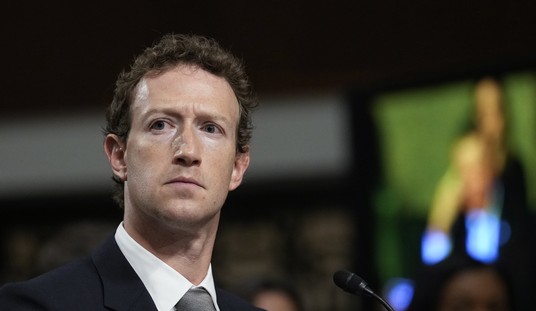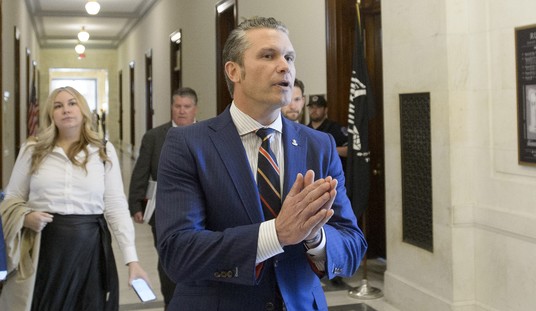From carbon footprint calculators to electricity-free weddings, the media’s promotion of anti-global warming hysteria is warming up with the approach of Earth Day on April 22.
ABC’s Good Morning America was actually running a Countdown to Earth Day every morning, beginning last week, as if we were all like kids waiting for Christmas Day. Maybe that’s how it is at Al Gore’s house.
The New York Times Magazine on Sunday devoted the entire issue to a “low-carbon catalog” of ideas for the environmentally inclined. However, as Folio magazine notes, it was printed on new, wasteful paper, not recycled pulp.
Monday’s Today Show on NBC had segments on “eating green,” wind power, recycling electronics, and green investing. Over on ABC, Good Morning America also had viewers grazing on a segment about eating green.
Nothing, however, demonstrates the media’s sheer hostility to the American Way of Consumerism and the need for environmental penance than the two following items.
National Public Radio kicked off its Earth Week on Monday with “a series of conversations about food’s footprint.” That’s right. Put down that cheeseburger and listen. In the first installment on Monday, Alex Chadwick talked to Dr. Gina Solomon, a senior scientist with the Natural Resources Defense Council, “about how the food we eat contributes to greenhouse gases.”
The villain of the piece? Cows. According to Dr. Solomon, Americans’ animal-based foods generate “a third as much as their car produces” in greenhouse gases. Cows come in for even more blame than pigs and other critters, because cows emit copious amounts of methane and nitrous oxide, Solomon said. This means that the bacon in your bacon cheeseburger pales as an environmental menace compared to the cheese and the beef.
Recommended
So this means that the other Solomon, the wisest man in the world and the author of the Book of Proverbs, was not doing the Earth any favors by sticking to a pork-free Kosher diet and eating good, rabbinically approved beef. To be fair, the environmentalists at NPR would have had him munching on a stick of celery, with a carrot chaser.
Overall, food production itself of all kinds “contributes a third of greenhouse gases” in the world, Ms. Solomon said. If you think about this for a minute, it means that Weight Watchers and anyone dieting is an environmental hero, striking a blow for a greener Earth!
NPR helpfully provides a link to a California-based Web site that allows you to calculate your “carbon footprint.” The first thing they ask is how much income you make, which should tip off all but the chronically naïve as to where they’re going with this.
The other standout media item came courtesy of USA Weekend, where the editors got an early start in the April 4-6 edition by presenting a guide for having a “green” wedding.
“Think about a daytime outdoor wedding and reception – no need for electricity or lighting,” said Millie Martini Bratten, editor in chief of Brides magazine, who, along with other experts, dispenses loads of methane, er, ideas for having “a green wedding without sacrificing style or taste.” You folks in Minnesota, North Dakota and Alaska will probably have to put off your big day until August. No word on whether mosquito repellent is advised, though.
Brides (read: mothers of the bride, too) are instructed to worry not only about all the usual monstrous details of the matrimonial event but to incorporate these tips:
- Have the wedding and reception “in the same place so you won’t have to decorate two spots or travel from one to the other.” (Hmm. Savings like this could turn thrifty Dads into tree huggers in no time.) - Choose locally grown or produced products. ”To ensure sustainability, work with each vendor,’ advises Kai Robertson of the World Wildlife Fund. “Ask for Marine Stewardship Council-certified seafood, chicken raised without antibiotics, pasture-raised or grass-fed beef and fair-trade coffee.’ It may cost more (no kidding) but you can cut back in other ways. ‘Serve [smaller] bites tapas-style,’ Bratten says.” (Better not invite any cowboys or football players. They get hooongry.) - Invitations? “About 500,000 trees every year are used to support weddings in the United States,” another expert darkly warns. “So opt for invitations that are printed on recycled paper, and buy from companies that use wind power.” Or, better yet, you can skip paper invitations altogether by “e-mailing your guests.” - Wear a used wedding dress or make yours from “eco-friendly fabrics such as hemp, silk, organic cotton or bamboo.” Nothing says “I do!” like a bamboo veil. How about a burlap train for that dress? - The honeymoon? Forget Hawaii, Niagara Falls or the Poconos. “Consider signing up for eco-tours…seek out hotels and resorts that are recycling….” - Finally, make your guests feel special by “making a donation in lieu of individual favors” to one of the environmental groups whose Web sites USA Weekend helpfully provides. That should save some time.
Any environmentally sensitive brides-to-be who are not utterly discouraged by now and have thrown themselves on a couch crying can contemplate this: Maybe it’s all a media plot to discourage marriage and therefore breeding of new humans who will grow up to consume cheeseburgers and thereby ruin the earth.
Or the bride-to-be can forget the “green” nonsense altogether, enjoy the guilty pleasure of watching a video of My Big Fat Greek Wedding, and get back to arguing over the guest list.

























Join the conversation as a VIP Member